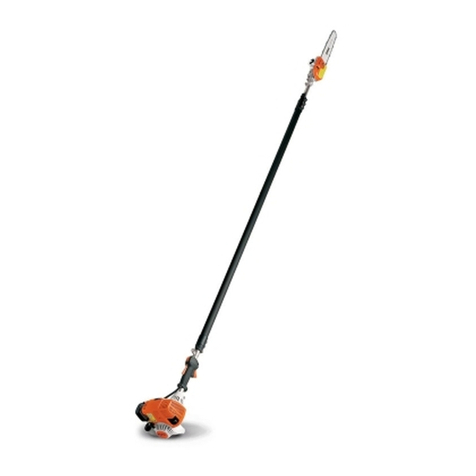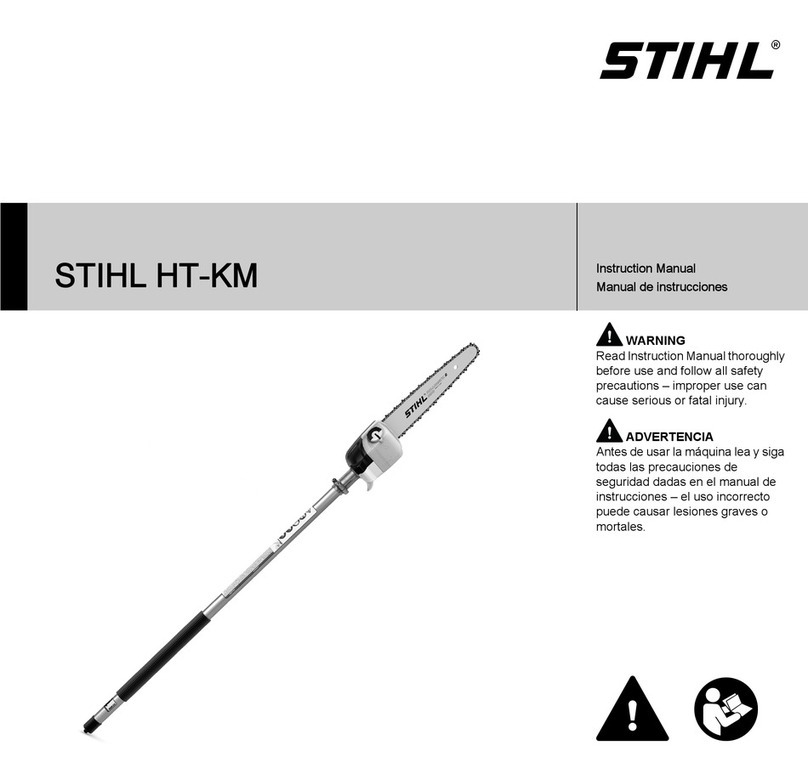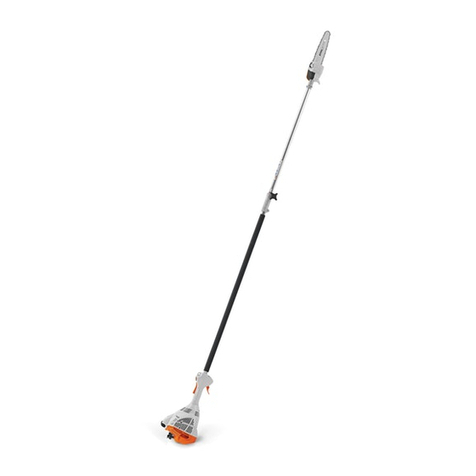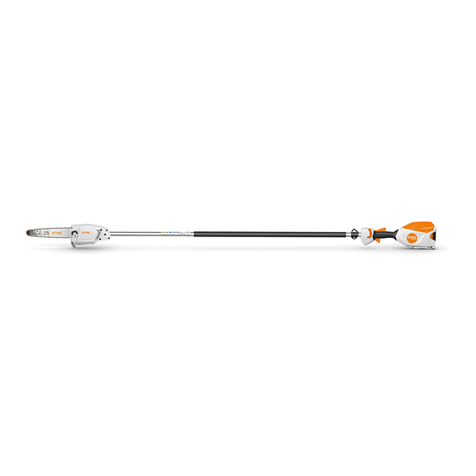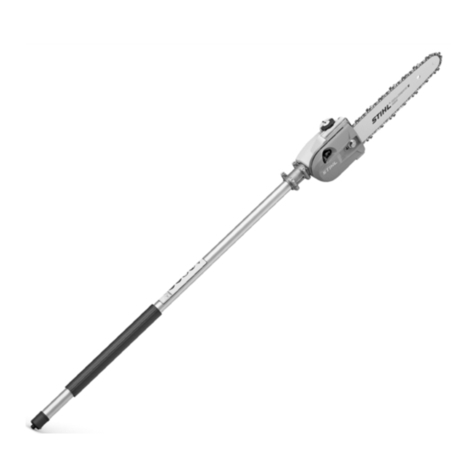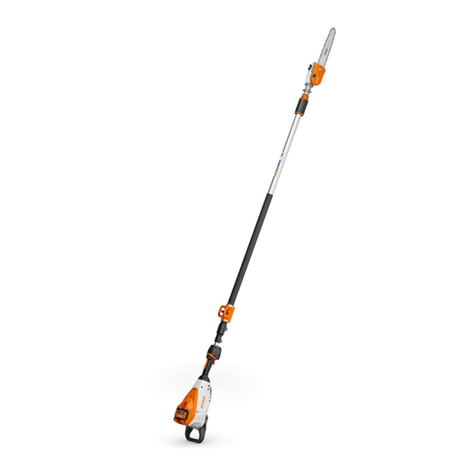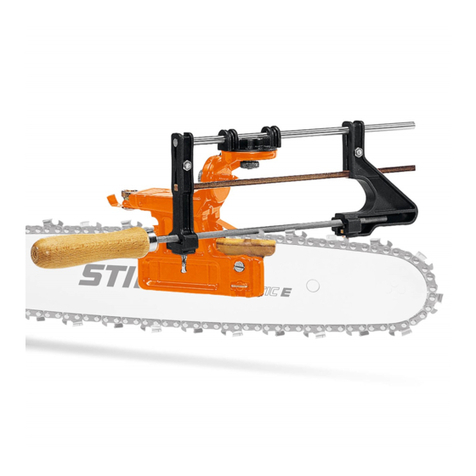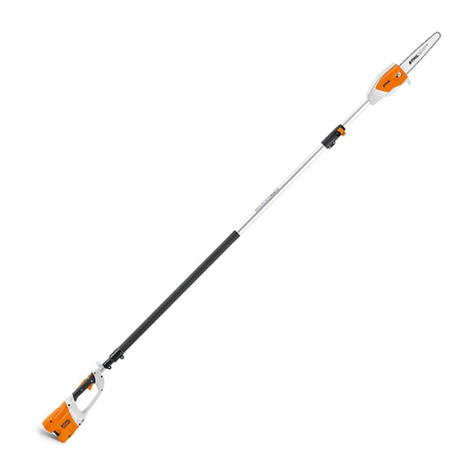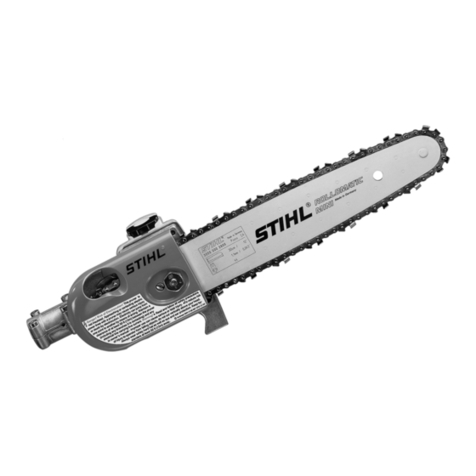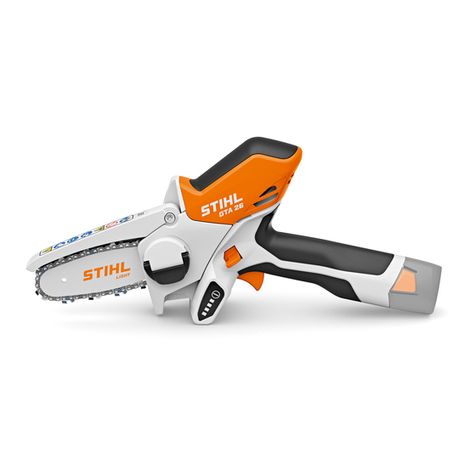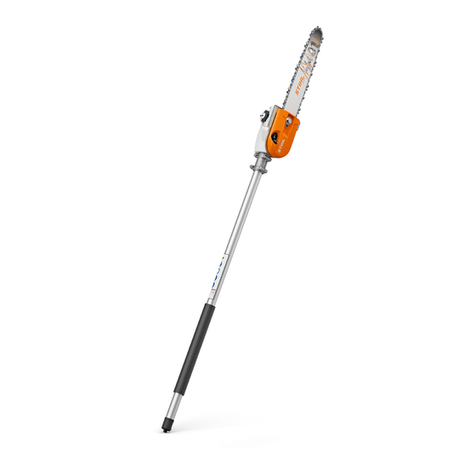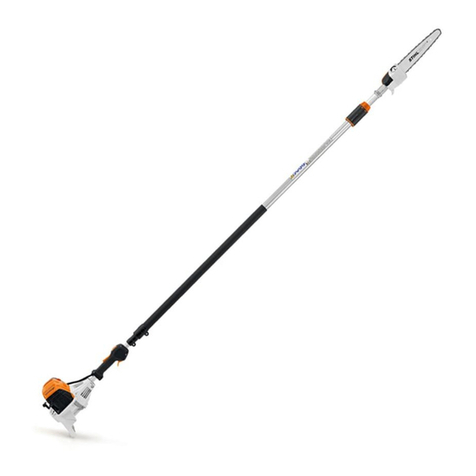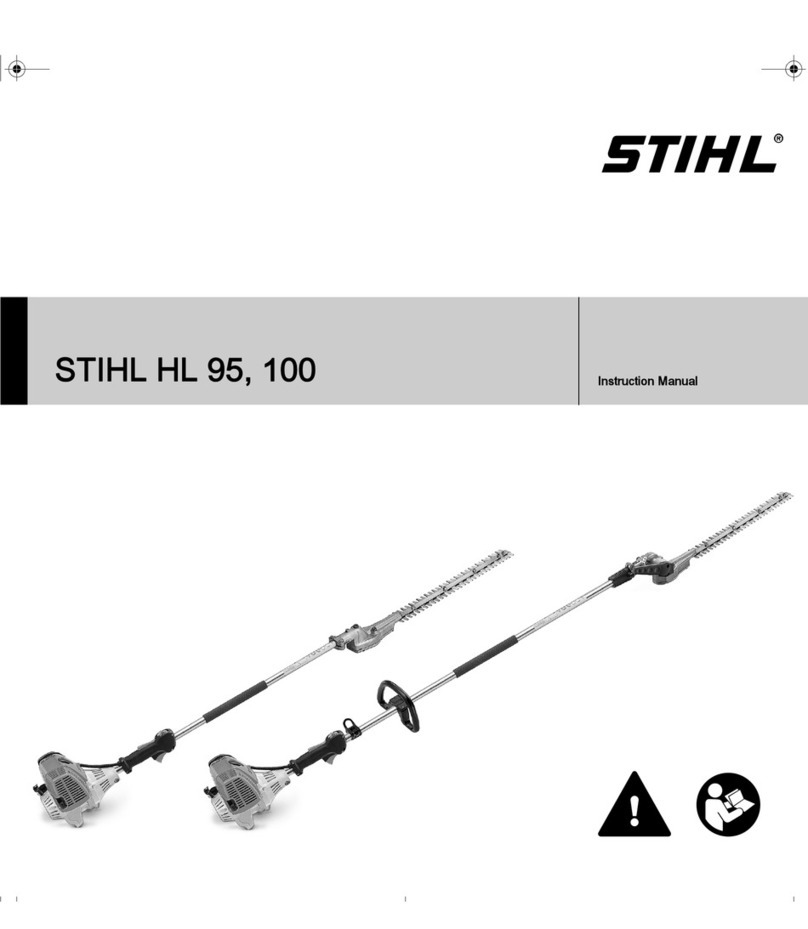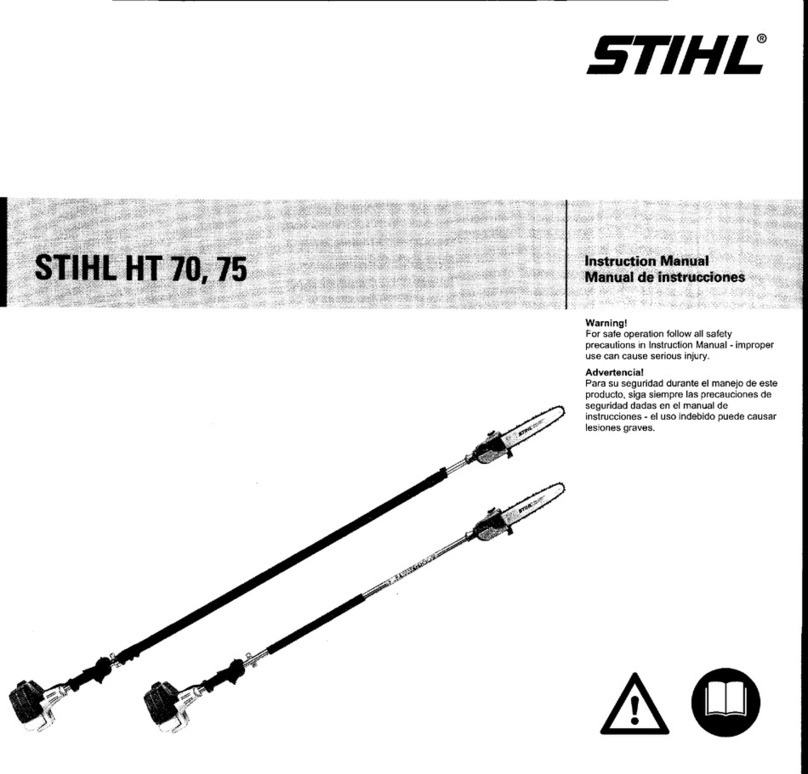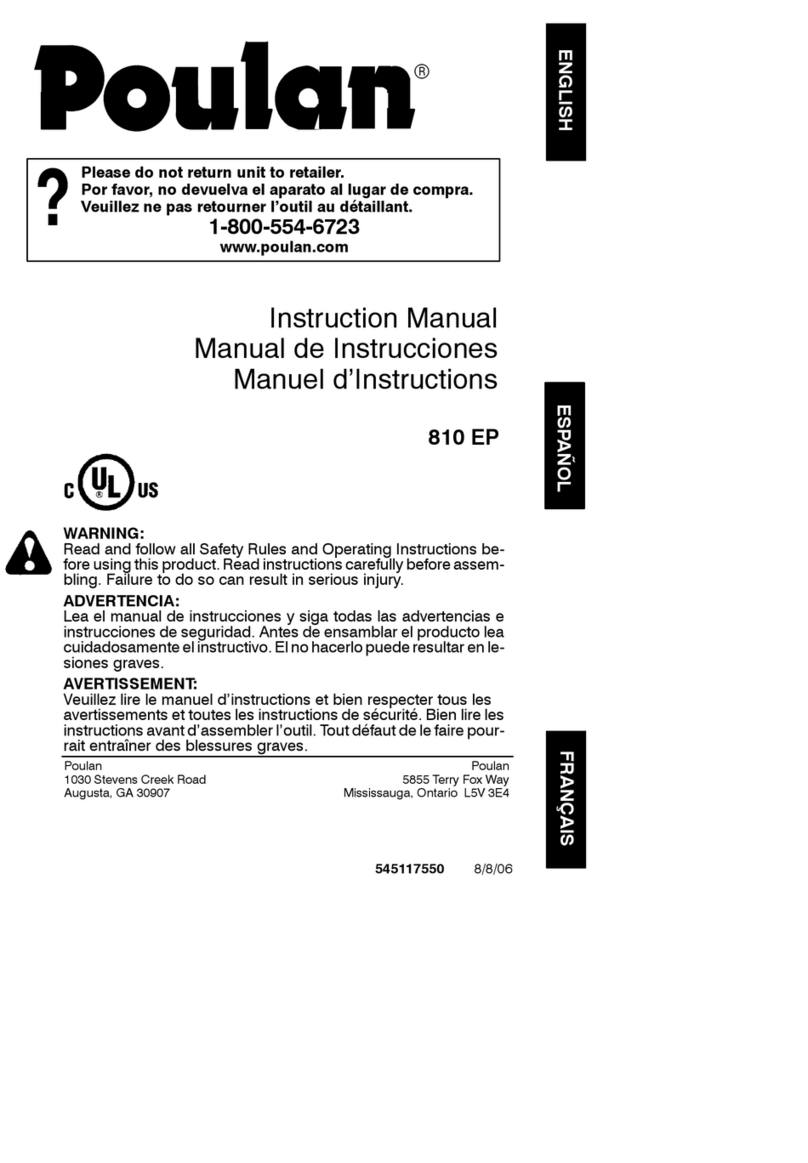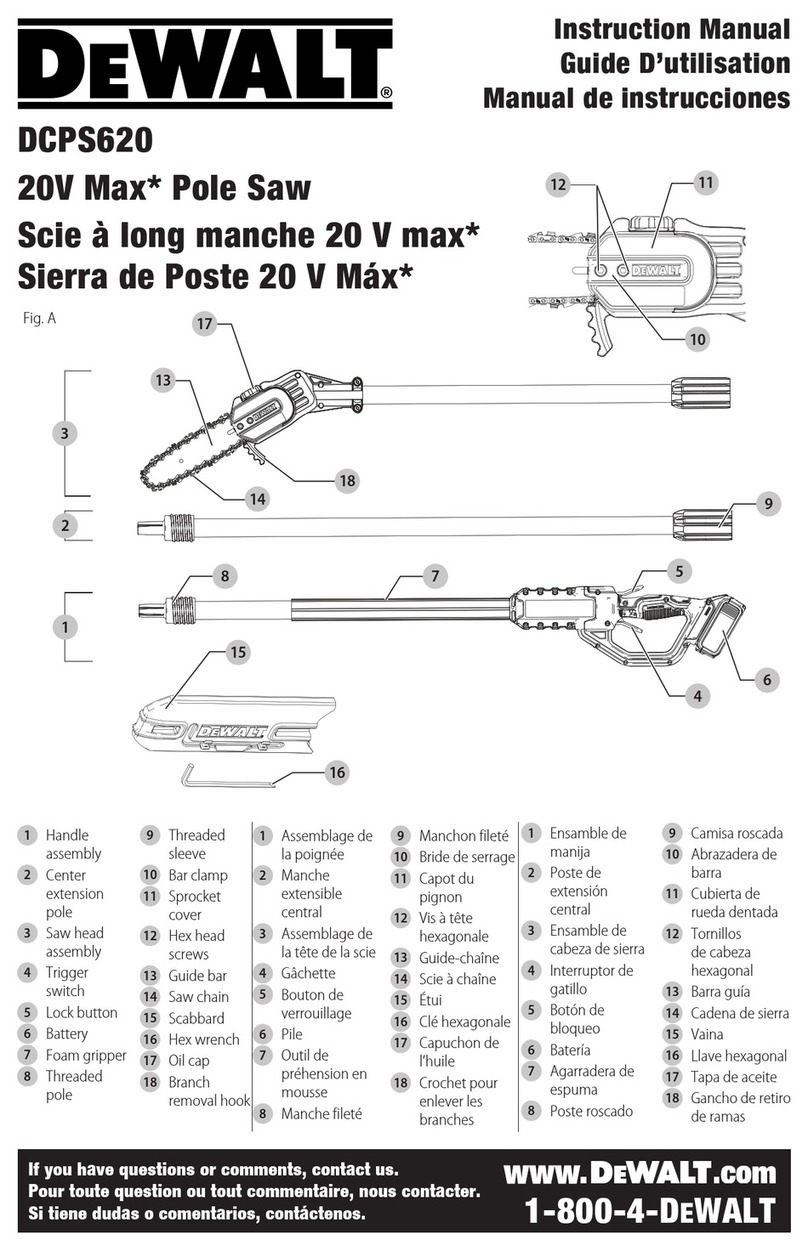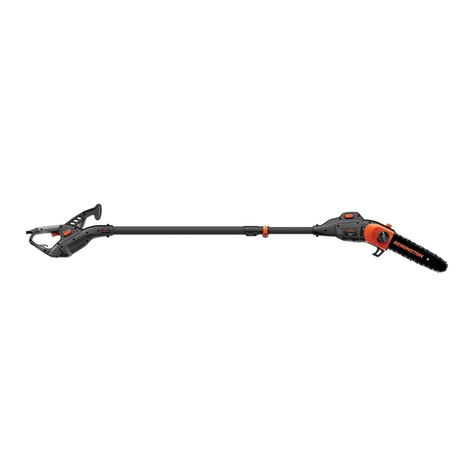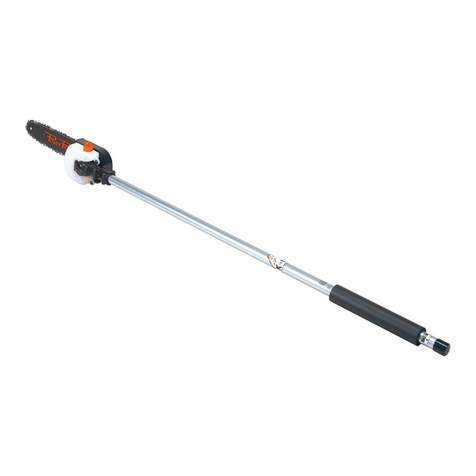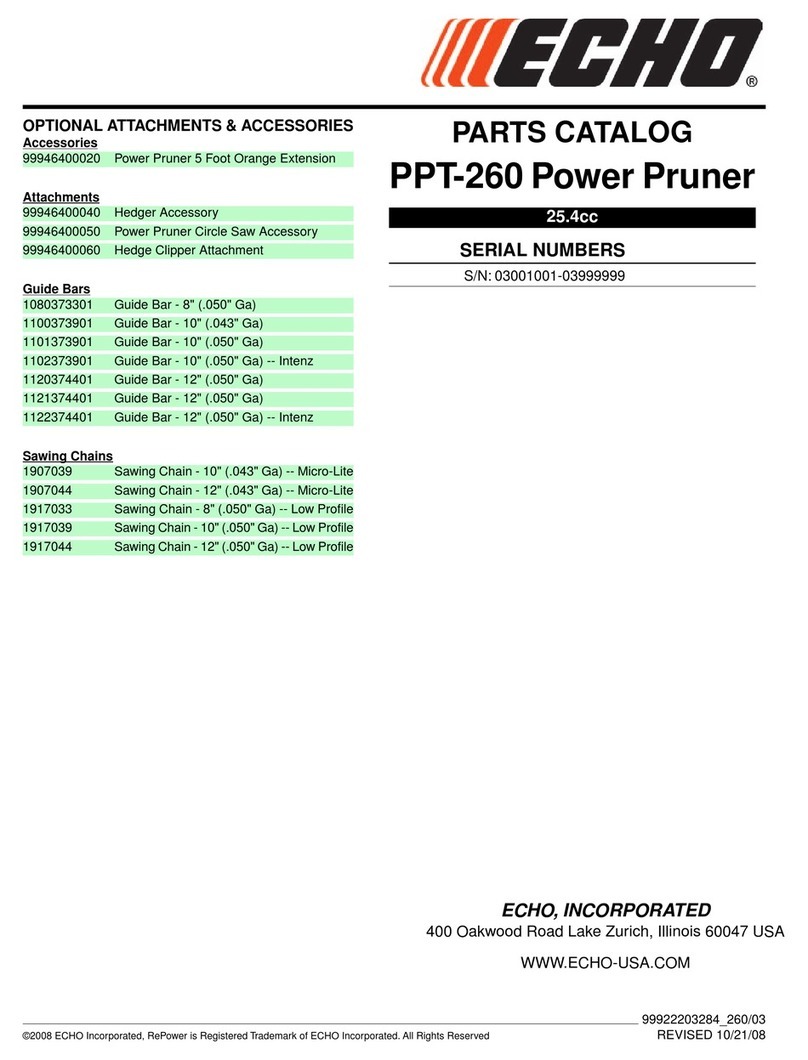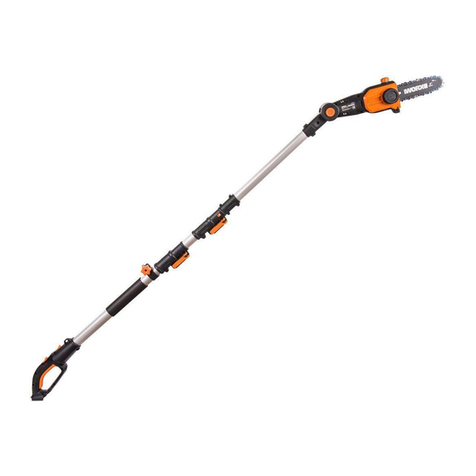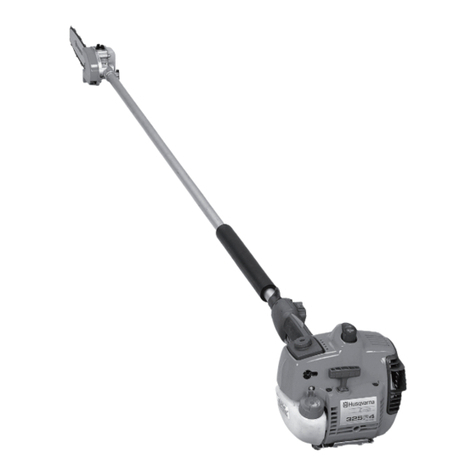9HT 100, HT 101, HT 130, HT 131
English / USA
!Warning!
Never attempt to operate your power
tool with one hand. Loss ofcontrol of the
power tool resulting in serious or fatal
injury may result.
!Warning!
In order to properly control your pole
pruner, always maintain good balance
and a firm foothold. Never work on a
ladder, in a tree or on anyother insecure
support. Never hold the machine above
shoulder height. Do not overreach.
When working at a height above 15 feet
(4.5 m) use a lift bucket. For pole pruner
with adjustable shaft, expand the shaft
onlyasfar as necessaryfor theintended
application.
!Warning!
Special care must be taken in slippery
conditions (wet ground, snow) and in
difficult, overgrown terrain. Watch for
hidden obstacles such as tree stumps,
roots, rocks, holes and ditches to avoid
stumbling. For better footing, clearaway
fallen branches, scrub and cuttings. Be
extremely cautious when working on
slopes or uneven ground.
!Warning!
Take extreme care in wet and freezing
weather (rain, snow, ice). Put off the
work when the weather is windy, stormy
or rainfall is heavy.
Working conditions
Operate and start your power tool only
outdoors in a well ventilated area.
Operate it under good visibility and
daylight conditions only. Work carefully.
!Warning!As soon as the engine is
running, this product
generates toxic exhaust
fumes containing
chemicals, such as
unburned hydrocarbons
(including benzene) and carbon
monoxide, that are known to cause
respiratory problems, cancer, birth
defects, or other reproductive harm.
Some of the gases (e.g. carbon
monoxide) may be colorless and
odorless.Toreducetheriskof seriousor
fatal injury/illness from inhaling toxic
fumes,neverrunthemachineindoorsor
in poorly ventilated locations. If exhaust
fumes become concentrated due to
insufficient ventilation, clear
obstructions from work area to permit
proper ventilation before proceeding
and/or take frequent breaks to allow
fumes to dissipate before they become
concentrated.
!Warning!
Inhalation of certain dusts, especially
organic dusts such as mold or pollen,
can cause susceptible persons to have
an allergic or asthmatic reaction.
Substantial or repeated inhalation of
dustandotherairbornecontaminants,in
particular those with a smaller particle
size, may cause respiratory or other
illnesses. This includes wood dust,
especially from hardwoods, but also
from some softwoods such as Western
Red Cedar. Control dust at the source
where possible. Use good work
practices, such as always cutting with a
properly sharpened chain (which
produces wood chips rather than fine
dust) and operating the unit so that the
wind or operating process directs any
dust raised by the power tool away from
the operator. Follow the
recommendations of EPA/OSHA/
NIOSH and occupational and trade
associations with respect to dust
(“particulate matter”). When the
inhalationofdustcannotbesubstantially
controlled, i.e., kept at or near the
ambient (background) level, the
operator and any bystanders should
wear a respirator approved by NIOSH/
MSHA for the type of dust encountered.
